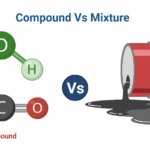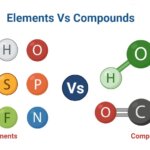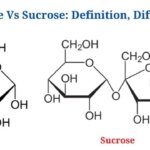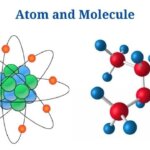What are Reactants?
- In a chemical reaction, reactants are substances or compounds that undergo a chemical change.
- On the left side of the arrow, reactants are present, indicating the progression of a chemical reaction.
- In different reactions, the number of reactants in a chemical equation may differ. A single reactant can produce one or more products in some reactions, while two or more reactants may be present in others.
- The same component or material can behave as both a reactant as well as a product in a chemical reaction, depending on the reaction.
- Some reactants are highly reactive as well as can perform chemical transformations without the use of a catalyst, whilst others may necessitate the use of catalysts as well as precise reaction conditions.
What are Products?
- After a chemical reaction, products are substances or compounds generated from reactants.
- On the right side of the arrow, products are printed, demonstrating the path of chemical reactions from reactants to products.
- Similar to reactants, the quantity of products generated from the same reactants may vary depending on the presence of catalysts as well as reaction circumstances in various reactions.
- In reversible reactions, when the chemical reaction is reversed, the products can act as reactants.
- The number as well as concentration of products generated are determined by the reactant components’ reactivity.
What are Coefficients and how do they work?
- The total number of molecules of a chemical substance that participate in a chemical reaction is known as the coefficient or stoichiometric coefficient.
- Different chemical species are allocated stoichiometric coefficients in order to balance the total amount of atoms in reactants as well as products.
- In a chemical reaction, these factors offer a ratio between the number of reactant species as well as products.
- Stoichiometric coefficients are also useful for calculating the total number of atoms of an element involved in a chemical reaction.
- In order to balance the equation, the value of the stoichiometric coefficient in different molecules involved in the reaction may alter.
What are subscripts as well as how do you use them?
- Subscripts are numbers that indicate how many atoms of each element are present in the reactant as well as product molecules.
- A subscript appears below the elemental abbreviations as well as represents the contribution of different elements in distinct compounds. Subscripts are smaller than superscripts as well as are written beneath the type line.
- When balancing a chemical equation, the value of subscripts stays the same, but the total number of atoms in the molecule must be calculated by multiplying the value of subscript with the stoichiometric coefficient of the specific molecule.
What is the law of conservation of mass?
- In a chemical reaction, the reactants react with one another to produce products, but the total mass of the reactants before the chemical change is equal to the total mass of the products after the chemical change, according to the law of conservation of mass.
- In other words, the law of conservation of mass states that during a chemical reaction, the total mass of chemical species remains constant.
- The law of mass conservation is the same as the law of energy conservation. It establishes the mathematical link between the reactant mass as well as the product mass.
- In 1774, French chemist Lavoisier proposed the concept, based on the realization that mass cannot be generated or destroyed.
- The law follows Dalton’s atomic theory, that asserts that atoms cannot be formed or destroyed, but that atoms can rearrange themselves throughout a reaction. As a result, the chemical species’ total mass in a reaction is conserved.
Methods of Balancing a Chemical Equation
To acquire relevant information about the chemical change occurring in the reaction, a balanced chemical equation is required. A chemical equation can be balanced using one of two approaches.
A. Hit-and-Trial method
The hit-or-miss approach is a straightforward strategy with no set rules or principles. However, while using the hit-and-miss method to balance a chemical equation, you can do the following:
- Atomic forms are used to represent all elementary gases, whereas molecular forms are used to represent the rest of the chemical species.
- The total number of atoms of each element is compared on reactants as well as products.
- A number of atoms is chosen, as well as individual atoms are balanced.
- If the preceding approach fails, the molecule with the fewest atoms is chosen as well as balanced.
- When balancing, multiply the stoichiometric coefficient by the subscript to get the actual number of atoms in the molecule.
- Repeat step 6 until the number of distinct atoms in the reactants as well as products equals one.
- At the end, the elementary gases are balanced.
Example of balancing a chemical equation by hit and trial method
Mg3N2 + H2O → Mg(OH)2 + NH3
(a) To balance the Mg atoms, Mg(OH)2is multiplied by 3.
Mg3N2 + H2O → 3Mg(OH)2 + NH3
(b) To balance the N atom, NH3is multiplied by 2.
Mg3N2 + H2O → 3Mg(OH)2 + 2NH3
(c) To balance the H and O atoms, H2O is multiplied by 6.
Mg3N2 + 6H2O → 3Mg(OH)2 + 2NH3
B. Algebraic Approach
The algebraic technique entails assigning algebraic variables to each of the chemical species participating in the reaction as stoichiometric coefficients.
The values of each of the stoichiometric coefficients are obtained by solving the algebraic variables. The stages for balancing a chemical equation using the algebraic method are as follows:
- The unbalanced chemical equation is stated in the form of the chemical species’ molecular formulae.
- In the unbalanced equation, algebraic variables are allocated to each of the species as the stoichiometric coefficient.
- To determine the value of each algebraic variable, a series of equations is now prepared.
- These equations can have numerous solutions, as well as the variables’ minimum values must be chosen.
- To produce the balanced chemical equation, the values of all algebraic variables are swapped into the chemical equation.
Example of balancing chemical equation by the algebraic method
C6H12O6 + O2 → CO2 + H2O
(a) To each of the chemical species in the chemical equation, algebraic variables are added as the stoichiometric coefficient.
aC6H12O6 + bO2 → cCO2 + dH2O
(b) Based on the chemical reaction, different equations are constructed for all variables.
Equation for ‘a’
- In the reactant, ‘a’ molecules of C6H12O6 have 6a carbon atoms, while ‘c’ molecules of CO2 have 6c carbon atoms; 6a=c.
For the letter ‘b,’ here is an equation.
- The reactant has 12a hydrogen atoms in ‘a’ molecules of C6H12O6, whereas the product includes ‘2d’ hydrogen atoms in’d’ H2O molecules; 12a = 2d.
(c) After examining many equations, the overall equation for the algebraic variables is determined.
6a + 2b = 2c + d
(d) Since the variables’ minimal values must be calculated, one of the variables is given a value.
If a=1,
c= 2a = 6
d= 6a= 6
By replacing the values of a, c, as well as d in the equation, the value of ‘b’ may be found.
6×1 + 2b = 2×6 + 6
2b= 12; b=6.
(e) To obtain the balanced chemical equation, the values of the variables are substituted in the chemical equation.
C6H12O6 + 6O2 → 6CO2 + 6H2O
Balancing Chemical Equations Citations
- Gautum SD, Pant M and Adhikari NR (2016). Comprehensive Chemistry, Part 2. Sixth Edition. Heritage Publishers and Distributors, Pvt. Ltd.
- https://mrsmeckelborg.weebly.com/uploads/9/1/5/0/91503816/7.1_cellular_respiration.pdf
- https://www.youtube.com/watch?v=qgUn_iypQUg
- https://www.vedantu.com/chemistry/balancing-chemical-equations
- https://www.reference.com/science/reactants-products-585ab0606d4a4ba7
- https://www.reference.com/science/example-law-conservation-mass-931e539862dc8d9f
Related Posts
- Dissecting Microscope (Stereo Microscope) Definition, Principle, Uses, Parts
- Saturated vs Unsaturated Hydrocarbons: Definition, Differences, Examples
- Ethanol Vs Methanol: Definition and 10+ Differences
- Hydrogen Bond: Properties, Definition, Types, Examples
- Nitrate Vs Nitrite: Definition, Differences, Examples
- Aromatic Compounds vs Aliphatic Compounds: Definition, Differences, Examples
- Compound Vs Mixture: Definition, Differences, Examples
- Elements Vs Compounds: Definition, Differences, Examples
- Molecules Vs Compounds: Definition, Differences, Examples
- Hard water Vs Soft water: Definition, Differences, Examples
- Glucose Vs Sucrose: Definition and Key Differences
- 13+ Difference Between Atom and Molecule with Examples
- How to Balance Chemical Equation: Methods, Steps, Examples
- Ionic Bond: Definition, Properties, Examples
- Amylase Vs Amylose: Definition, Differences, Example
















